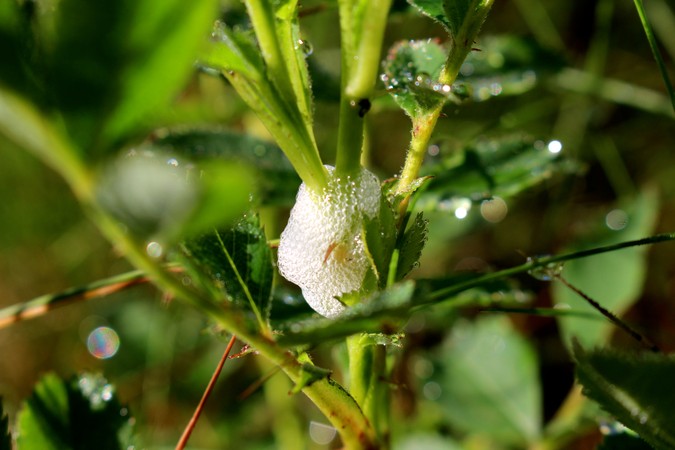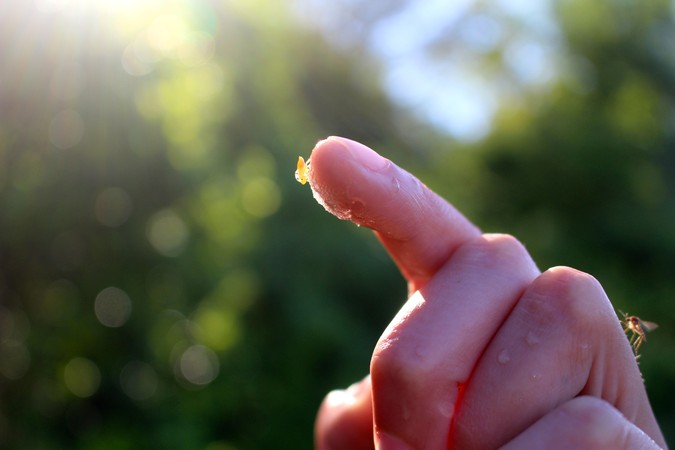The Wrack
The Wrack is the Wells Reserve blog, our collective logbook on the web.
The Wrack is the Wells Reserve blog, our collective logbook on the web.

Who’s been spitting in the grass? Stick your fingers into the frothy mass and you’ll likely find a cool and moist tiny lime-colored creature with black eyes. This is the nymph (or immature form) of a spittlebug (Cercopidae).

The spittlebugs begin their lives in fall, when their mothers lay eggs on plant stems. The eggs remain there through the long winter. When the temperature rises in the spring, they hatch and immediately create their characteristic spittle. They use their syringe-like mouthpart to tap the plant’s xylem, or water pipes, which contain 0.005% sugar. It takes a lot of this ever so slightly sweet water to satisfy a spittlebug’s appetite. They pump around 150-300 times their own weight every 24 hours. The excess water sap is excreted through their butts.
As this is happening, the bugs move their abdomens up and down, adding air to the water and creating bubbles. They keep making bubbles until their entire bodies are covered with the frothy mass, also known as “cuckoo spit.” The foam provides a moist and safe haven from predators. Eventually this froth shrinks and hardens, but the nymphs keep making new bubbles every day until they molt into winged adults.
The adults, or froghoppers, have incredible leaping abilities. They are able to jump 70cm in the air with an initial acceleration of 4,000 meters per second! The froghoppers have lovely table manners as they suck sap — they’re able to discharge excess water drops away from their bodies. In contrast, the nymphs (babies that they are) let it slobber all over themselves in a perfect bubble-creating fashion.
Go out and stick your fingers in the froth! Take care to return the spittlebug to its host plant/spit after careful inspection :) You might also find a certain fruit fly larvae (Drosophilidae) that develop exclusively in spittlebug spittle!